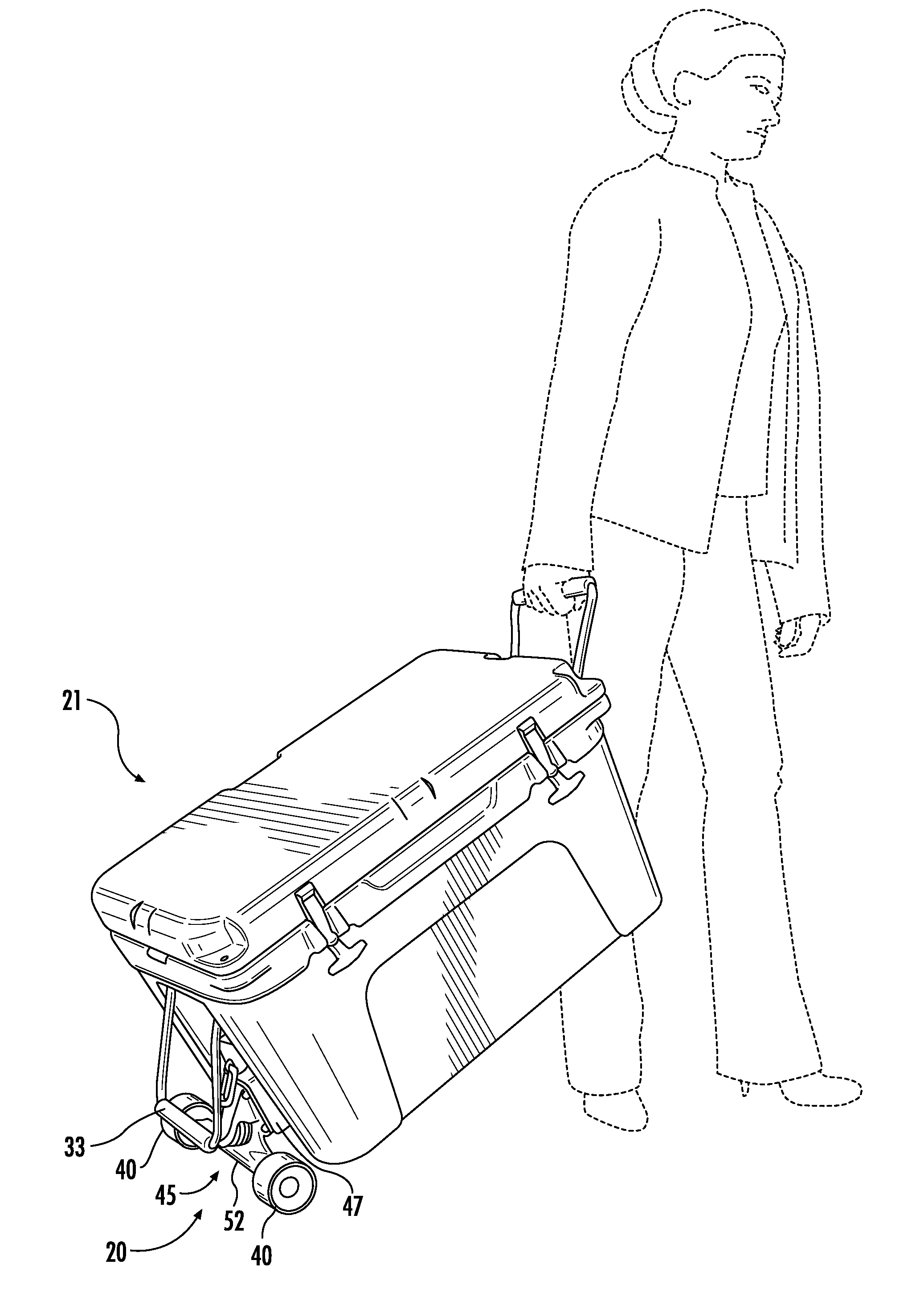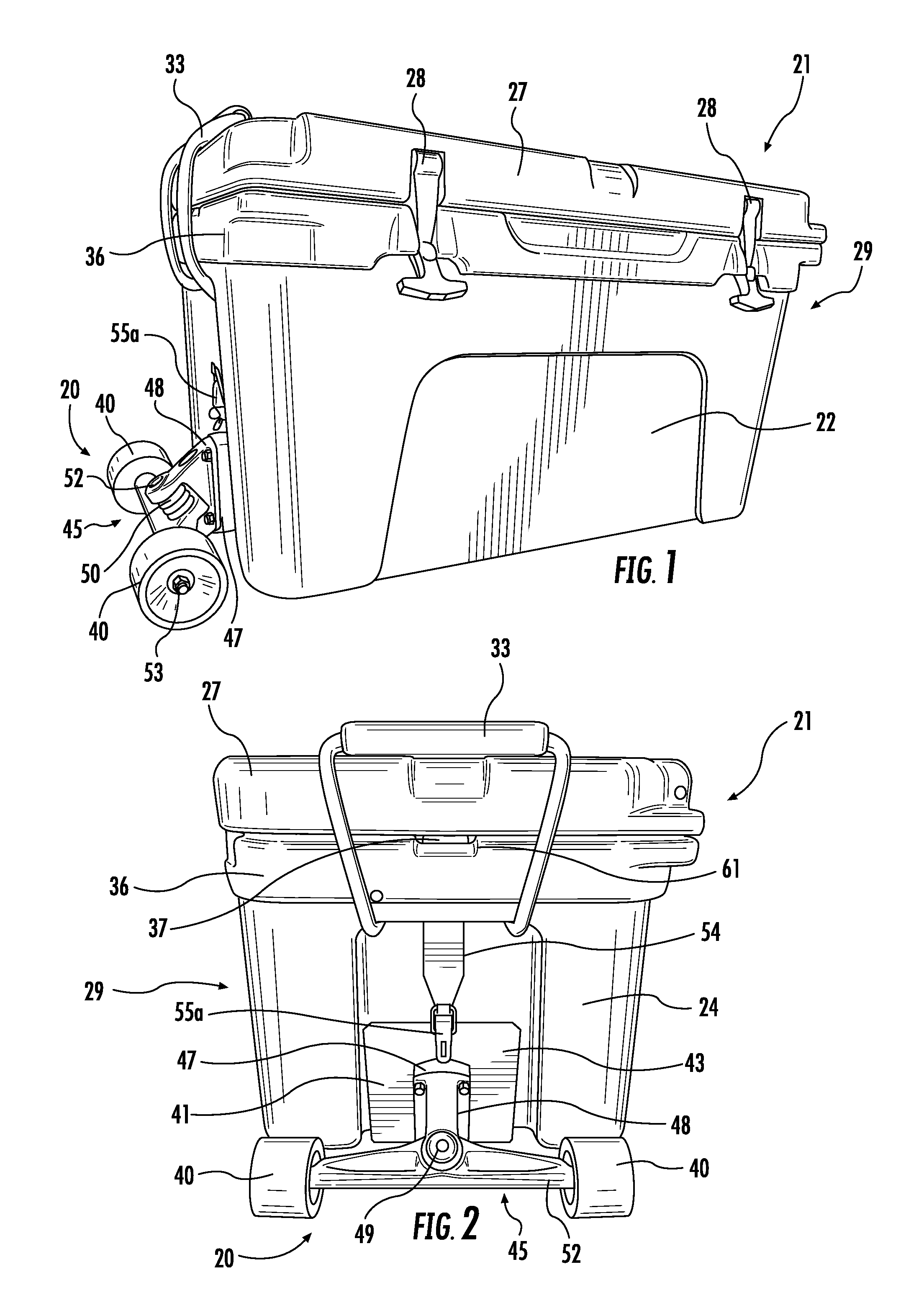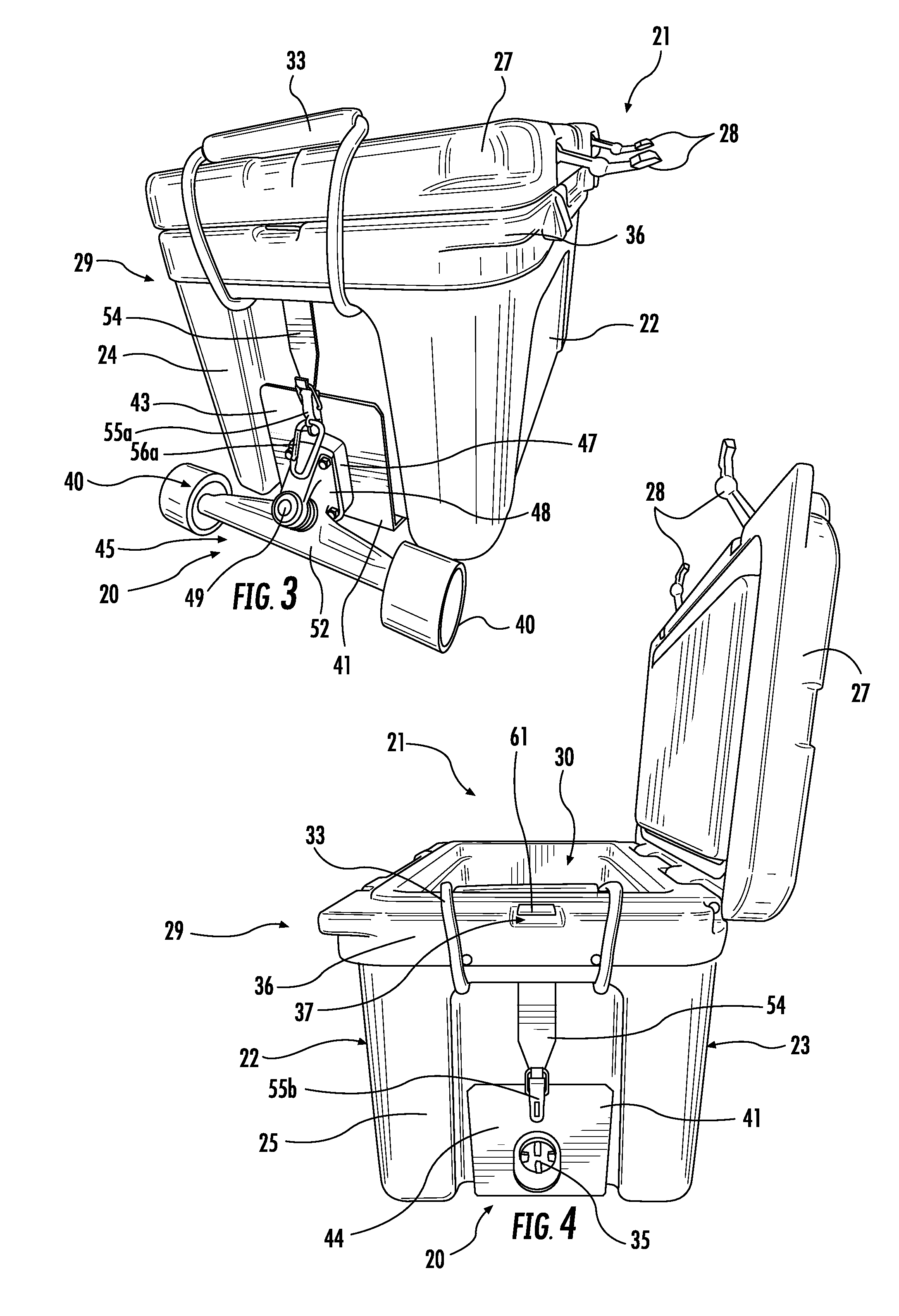Cooler transporting device
a cooler and transporting device technology, applied in transportation and packaging, skating, sports apparatus, etc., can solve the problems of reducing the efficiency of coolers, wheeled coolers, and the amount of insulation in side walls and/or bottom walls, so as to improve mobility, facilitate transport, and facilitate the effect of transporting coolers
- Summary
- Abstract
- Description
- Claims
- Application Information
AI Technical Summary
Benefits of technology
Problems solved by technology
Method used
Image
Examples
Embodiment Construction
[0030]The terms “top,”“bottom,”“front,”“rear,” and “side” are used in the specification to describe the embodiment of the invention as illustrated in the accompanying Figures. It should be appreciated that in actual use, an embodiment of the invention may be rotated as needed to accomplish the objectives of the invention. As a result of such rotation, the various terms used herein of “top,”“bottom,”“front,”“rear,”“side,” and the like may not literally apply to a particular arrangement. Such terms are relative and are used herein to describe the Figures for illustration purposes only and are not intended to limit the embodiments shown to any particular orientation.
[0031]Referring now to FIGS. 1-11, an exemplary embodiment of a cooler transporting device 20 in accordance with the present disclosure is illustrated. As shown in the accompanying Figures, a cooler transporting device 20 according to the present disclosure generally includes a cooler 21 attached to a U-shaped shoe member 4...
PUM
 Login to View More
Login to View More Abstract
Description
Claims
Application Information
 Login to View More
Login to View More - R&D
- Intellectual Property
- Life Sciences
- Materials
- Tech Scout
- Unparalleled Data Quality
- Higher Quality Content
- 60% Fewer Hallucinations
Browse by: Latest US Patents, China's latest patents, Technical Efficacy Thesaurus, Application Domain, Technology Topic, Popular Technical Reports.
© 2025 PatSnap. All rights reserved.Legal|Privacy policy|Modern Slavery Act Transparency Statement|Sitemap|About US| Contact US: help@patsnap.com



